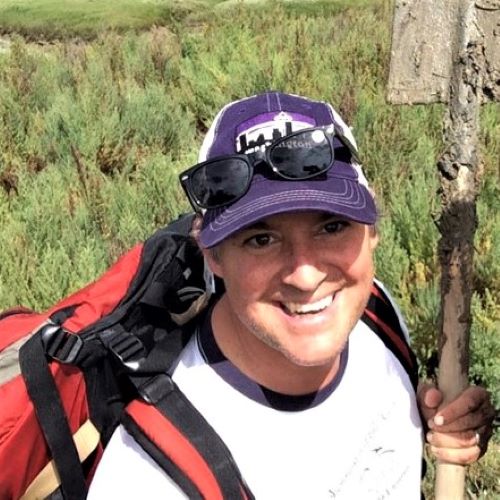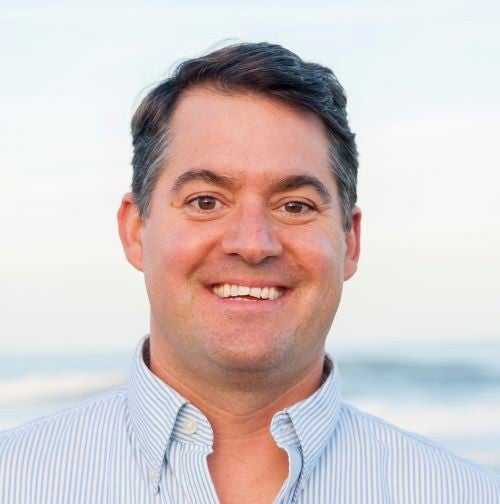Decades ago, beach walkers scoured the sand for sea glass in a rainbow of colors. Now, beaches, salt marshes and our oceans are more likely to be infused with tiny bits of plastic. University of Rhode Island researchers in the COAST Lab (COASTL), led by Professor J.P. Walsh in the Graduate School of Oceanography, estimate that the top 2 inches of the floor of Narragansett Bay now contain more than 1,000 tons of microplastics. That buildup has occurred in just the last 10 to 20 years.

Professor J.P. Walsh
On Wednesday, Nov. 6, at 7 pm, Prof. J.P. Walsh and other members of the COASTL team will join the Land Trust Learning Series to discuss their findings about microplastics in our environment, including research conducted over the last year at Mussachuck Beach, a Land Trust property in Barrington. The presentation will take place in the Salem Family Auditorium at the Barrington Public Library.
Microplastics are small plastic particles 5 centimeters or smaller. The smallest of these can’t be seen without a powerful microscope; the largest are plastic production pellets called “nurdles” about the size of a pea. Microplastic pollution comes from runoff, littering of single-use plastic items, wastewater treatment facilities, shipping, industrial plastic production, and fisheries. However, it’s estimated that only 1% of that marine plastic remains in the water column. Most microplastics are eventually deposited on shorelines and in marine sediment.
With more than 16 trillion microplastic particles trapped in the top layer of Narragansett Bay’s sediment, the bay is serving as a filter for plastic pollution. This trapping has negative consequences, and may cause behavioral changes in mammals, but might also point the way to potential for efficient removal. Coastal habitats are more easily accessible than the open ocean, making clean-up efforts more feasible.
Listen to Prof. Walsh speak about his research at Mussachuck Grove in December 2023.

Visible microplastics found in the sediment at the most polluted site from the study near Providence, Rhode Island. (Photo by COASTL team member Victoria Fulfer)
COASTL strives to determine how materials move and accumulate along shorelines and in the sea. Under the direction of J.P Walsh and in partnership with others, COASTL uses a combination of research methods including geographic information systems (GIS), sediment coring, seafloor mapping, process measurements and laboratory analyses to understand coastal and ocean issues and processes. Studies focus on sedimentary systems, from river mouths to the edge of ocean basins, and from tropical mangroves to high-latitude fjords, and have relevance to biological, chemical, physical and human dynamics. While some projects may only involve a single student examining a local salt marsh, other investigations require many scientists on oceanographic research expeditions.
About J.P. Walsh
J.P. Walsh is a professor of oceanography and a geological oceanographer with a doctorate in oceanography from the University of Washington, a master of science in marine environmental science from Stony Brook University, and a bachelor’s degree in geology from Colgate University. Before joining URI’s Graduate School of Oceanography, he was a professor at East Carolina University and program head for coastal processes at the Coastal Studies Institute. His research focuses on coastal sedimentary processes and related aspects, such as coastal erosion, pollutant fate and sand resources for beach nourishment. He uses sediment characteristics, oceanographic measurements, GIS and geophysical methods to understand the processes shaping shorelines and the seafloor.

J.P. Walsh
Over his career, Walsh has conducted research around the world including in the Philippines, France, New Zealand, Antarctica, and around the U.S. He is well known for his research investigating how sediments are eroded, transported and accumulate along coasts and in the ocean. This research is important to understanding geochemical cycling, evaluating ecosystem changes, defining coastal hazards and managing natural resources. He has recently spearheaded efforts to measure microplastics on the shoreline and seabed of Narragansett Bay, and he is working on several projects examining coastal change and resilience in New England.

